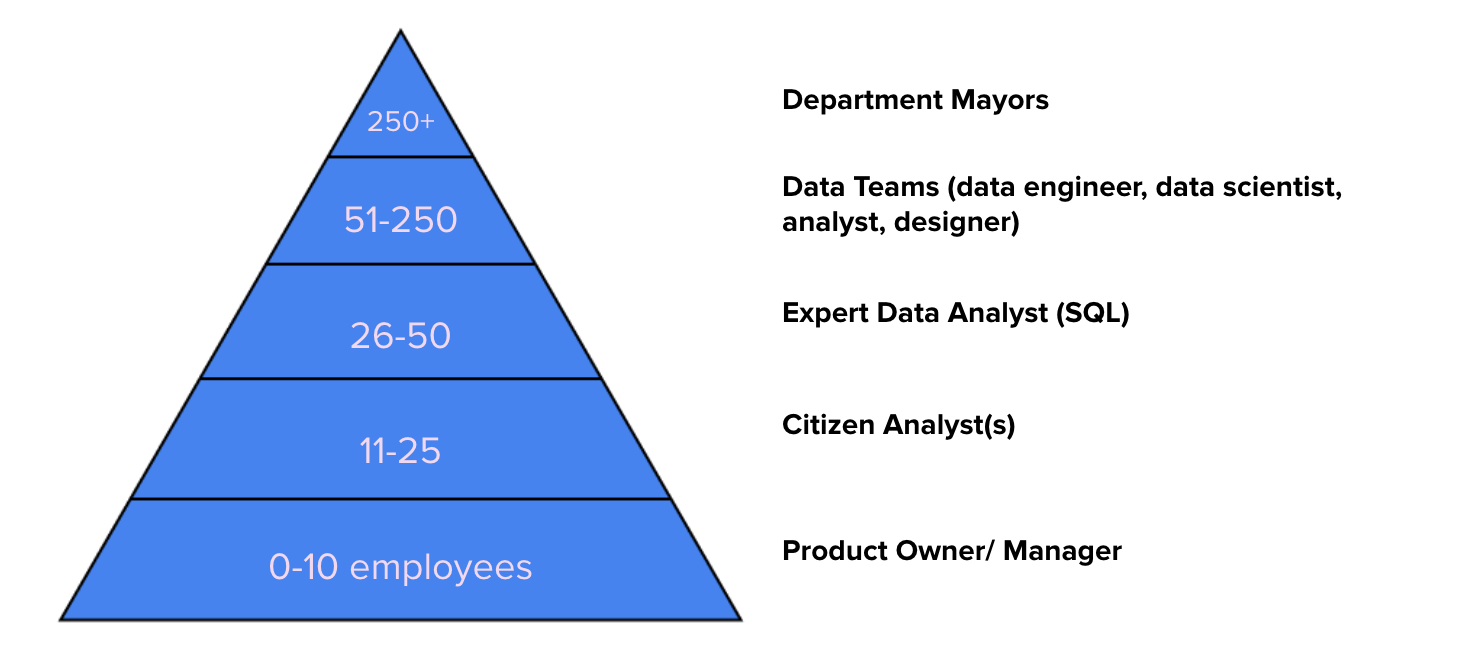Your Practical Guide for Launching a Successful Data Project
Posted by on October 9, 2020 Chartio
According to Gartner, 80% of data projects fail.
Data should be at the core of every business decision, so why do companies continue to struggle to get data projects off the ground?
Last week, I had the pleasure of digging into this topic with Andrew Madonna, CEO and Founder of Data Mill. Combined, we’ve helped over 1,000 companies develop and execute successful data projects. While each of our companies have unique missions, we see eye to eye on one key thing: helping our customers get access to their data fast, to make better decisions for their business.
We kept the discussion focused on the achievable and provided our audience with five tactical and practical steps they can take (today!) to get their data project off the ground.
Here they are:
Step 1: Focus on the smallest part and iterate
No successful data project started by someone saying, “Let’s begin by building all the charts and dashboards at once.”
If this is your objective for success, you already have one foot in the failure door. Instead of trying to build 30 reports for 3 different departments to use at the same time, we suggest you focus on a single, straight forward use case. Start with one question and grow from there.

— image source: Gitlab
According to entrepreneur Eric Ries, MVP refers to a “version of a new product which allows a team to collect the maximum amount of validated learning about customers with the least effort.” The illustration above shows the benefits of building a minimum viable product and evolving that product over time. Instead of trying to build a car from scratch, we suggest companies take an iterative process and evolve. Start with a skateboard, not the car. This will give you more time to get your bearings and develop some stability.
If you pick one question and focus on accessing and visualizing the data to answer that one question, you’re more likely to land on an outcome that is accurate. This exercise will teach you a ton about your data stack, your infrastructure, how things are defined, and more. Once you have these foundational elements, then you can scale.
Step 2: Bring in the Subject Matter Experts (SMEs)
While there are companies who make data exploration easy, fast and flexible (hey, Chartio is one of them!), you’re more likely to have a successful outcome with an expert or experts on staff. For smaller companies, this could be a technical product manager or even a technical co-founder. For mid-sized organizations, you need expertise in data engineering, data analysis and dashboard creation. Keep in mind that all three of these skill sets are rarely found in one hire. If you are just getting started, it might be beneficial to bring in agencies like Data Mill to take care of either part or all of that initial capabilities and eventually hire internal roles mentioned above to take over.
A data expert ensures you don’t make mistakes and potentially make critical business decisions based on incorrect data. For example, Andrew had worked with an e-commerce company with no SME. He found that they had been calculating their revenue wrong. Their revenue! Their dashboard was off 5% and before consulting Andrew, and they had been making decisions based on the information presented without questioning it. With the right expertise, a company will be able to scrutinize data to ensure it is valid.
Step 3: Set clear goals with clear resources
Setting goals drives clarity and focus within an organization. It also helps your project get executive buy-in. When you clearly outline what you’re looking to achieve, describe how you will do it, how much it will take and who you need to get it done right, executives automatically feel more confident in the project.
We discussed SME’s above, but it’s important to understand how setting goals ties to resourcing. You can’t achieve goals without the right hands on deck – and depending on the size of the company, you may need more hands.
If your team is small, you might start off with someone simply volunteering to take the lead on the data initiative, and that’s fine. But as your company scales, you will reach a point where questions become more complex and need greater expertise with a higher standard of execution. When your company reaches this point, it is highly recommended that you bring in an appropriate data team for the company of your size.
Below you will find a diagram of the natural evolution of a data teams at scale:
Natural evolution of a data team:

Step 4: Keep your data team independent
It is not uncommon to see a data team or program originate from business teams like marketing. While this is completely natural, it is crucial to acknowledge that this may lead to unintended biases in how data analysis is being done, performance indicators are getting established, and how much time is being spent to answer particular questions.
So you’ll want to keep your data team independent to remove any element of bias as you grow.
Step 5: Implement process and structure at a leadership level
The key to becoming an informed company starts at the top and trickles down. While being data-informed is desirable, it is by no means something that happens magically. It’s a mindset and an outcome your entire company has to work towards. And the efforts begin with your leadership team.
If the leadership is involved with the entire project from the beginning to end, this will facilitate the process of making a data project as a centerpiece of the organization. Blockers will be removed quickly and leadership will be able to lead by example.
In summary, every company can become more informed no matter what stage they are at. Start with a simple, focused set of questions that data can help answer, and do not try to boil the ocean. Find “experts” to help ensure that your process, data model, and metrics are surfacing accurate information. Scale and structure a team that eliminates any risk of bias and make sure leadership is involved on day one.
You got this! And if you don’t, Chartio and Data Mill are here to help where we can.
If you haven’t already, I suggest you check out the on-demand version of our webinar: Lessons From Setting up 1,000 Data Projects.


